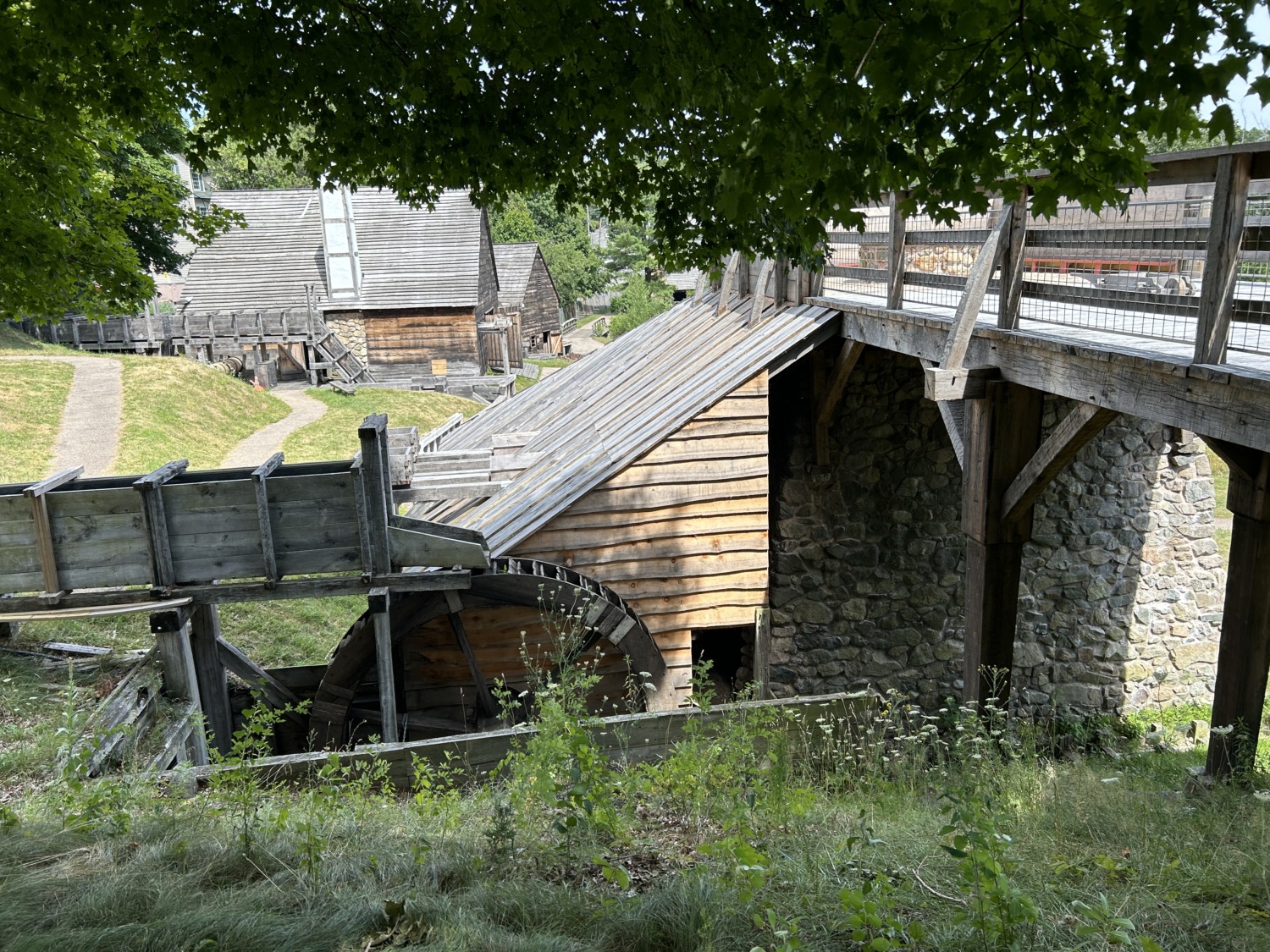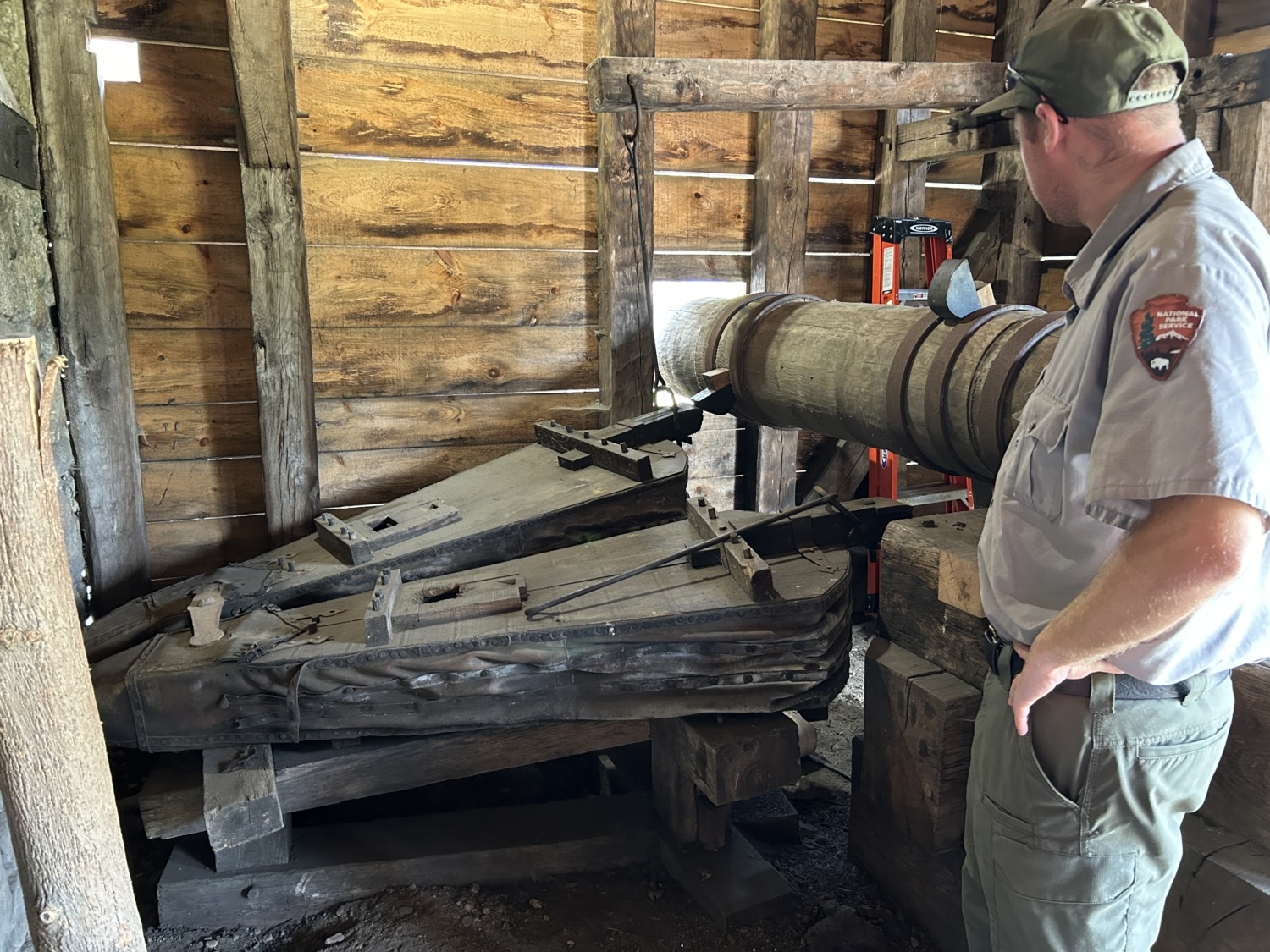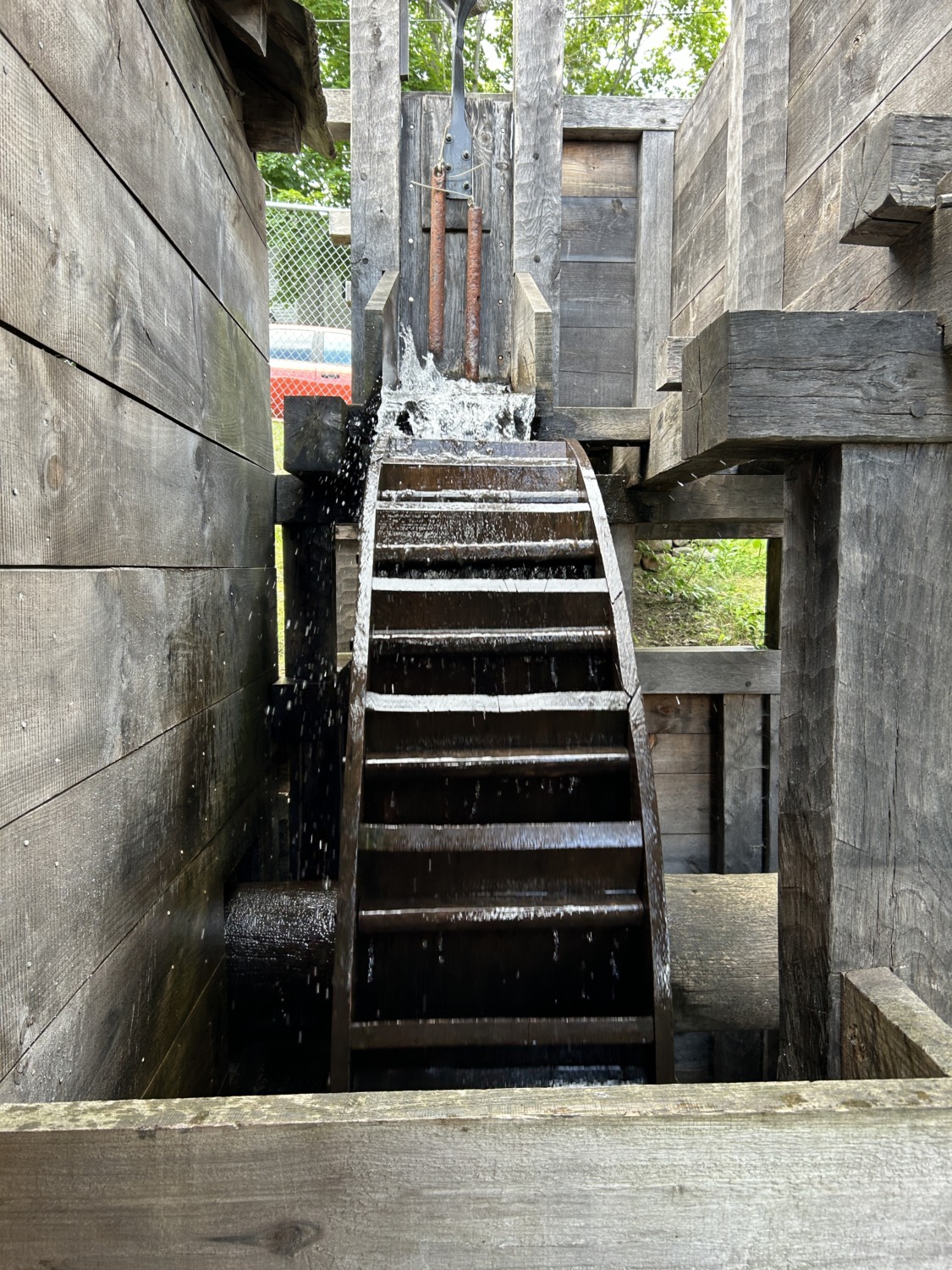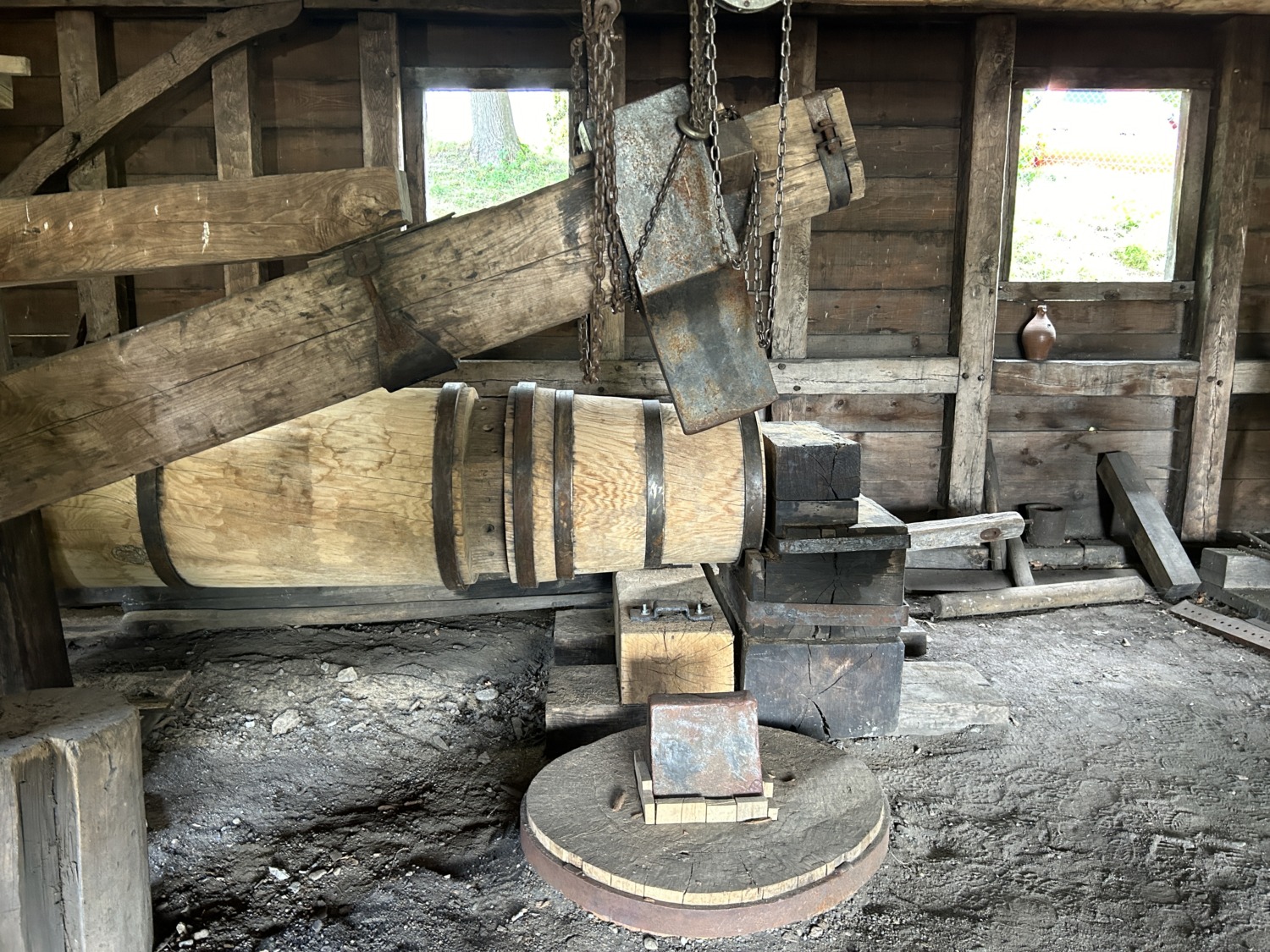Saugus Iron Works National Historic Site was our sixth National Park site the day we arrived in Boston. All the sites had been very interesting, but it was turning into a long day trying to pack history into our brains. We were looking forward to heading to the hotel after Saugus Iron Works.
Saugus Iron Works National Historic Site is the location of the first successful plant for the production of cast and wrought iron in the colonies. When bog ore deposits were found near Boston, the Puritans decided to build an iron works. The Saugus River site was perfect because it had water power, water transport, wood for charcoal, and bog iron. By 1646 the Saugus Iron Works was producing iron products for the colonies.
The Saugus Iron Works was only open from 1646 until 1668. Financial problems forced the closure of the plant, but it left a legacy. The workers brought to Massachusetts created a more diverse base of settlers. The Puritans in Massachusetts had a theocratic government which gradually changed to be more inclusive of other beliefs.
The only building at Saugus Iron Works National Historic Site that is original is the Iron Works House where the company agent lived. In 1915 Wallace Nutting bought the house and restored it as close as possible to its original appearance. His restoration of the house inspired the reconstruction of the iron works. Roland Wells Robbins began archaeological work on the site in 1948 and found the foundations of the buildings. In addition, his team unearthed the remains of the blast furnace, large sections of a waterwheel, and a 500-pound hammer head.
The Saugus Iron Works reconstruction was completed in 1954 and opened to the public. In 1968 the site was transferred to the National Park Service.
Tom and I arrived after the start of the afternoon ranger tour, so we decided to check out the museum and watch the movie. The movie did a good job of describing the process of early iron production. The museum had some interesting artifacts. The waterwheel that had been found by the archaeological team was reconstructed in the museum.
When we were done in the museum we walked out to the reconstructed iron works. The ranger tour was still going on so we avoided the buildings where the ranger was giving his talk. Until they got to the last building, the forge. When the tour arrived at the forge, Tom and I were in the rolling and slitting mill. We heard the water start running over the water wheel and went out to see it turning. Then we could hear the bellows moving and the hammer head hitting the anvil. We hurried in to the forge in order to see the entire thing working. Very cool!
After checking out all the buildings and walking along the scenic Saugus River, Tom and I returned to the Visitors Center and I got my sixth stamp of the day. We were hot and tired and ready to be done for the day.






